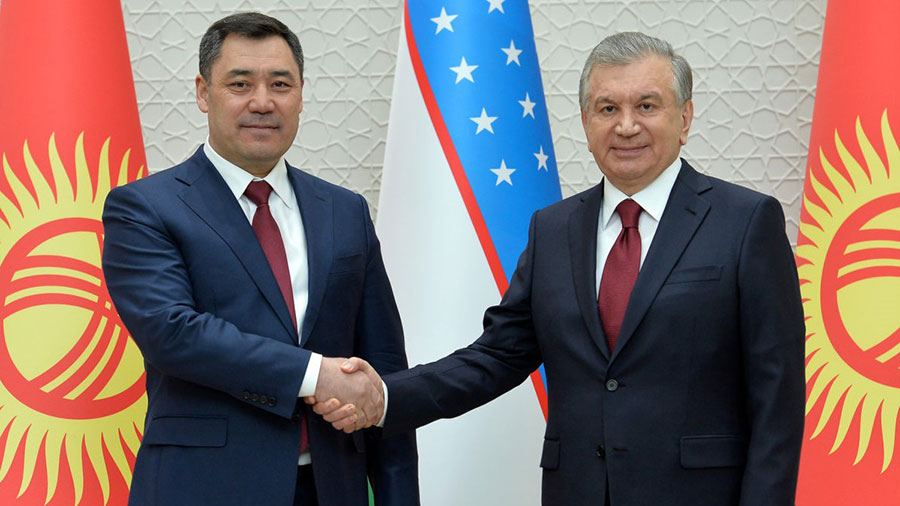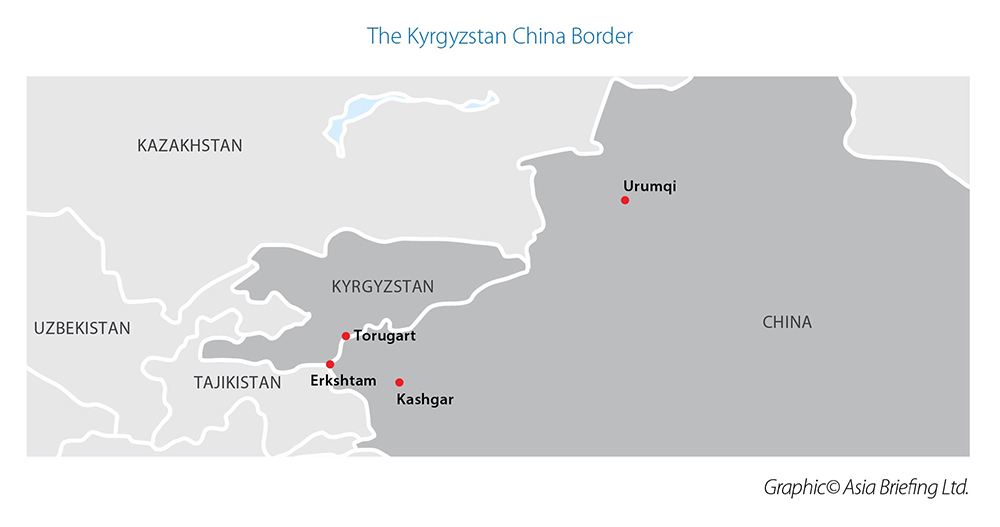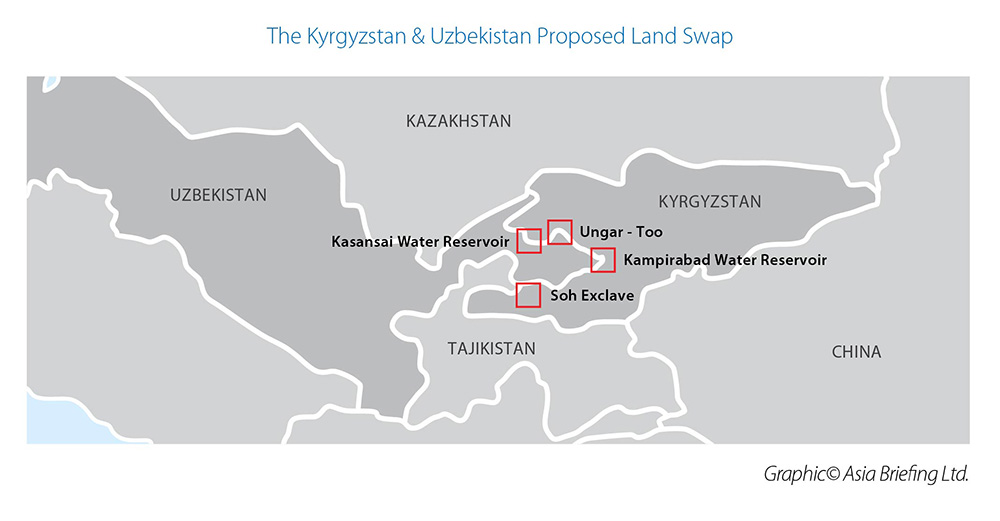Kyrgyzstan and Uzbekistan Resolve 30-Year-Old Border Dispute, Territories Being Exchanged

Kyrgyz President Sadyr Japarov and Uzbek President Shavkat Mirziyoyev
Op/Ed by Chris Devonshire-Ellis
Kyrgyzstan and Uzbekistan have agreed to resolve their border dispute, which dates back 30 years to 1991 and the breakup of the Soviet Union. The resolution comes as the entire Central Asian region is preparing for greater Asian connectivity. It is almost certain that China will have had some role to play in brokering the deal; both countries are members of the Shanghai Cooperation Organisation and the Belt & Road Initiative.
Resolving the dispute has become increasingly important as it affects bilateral interconnectivity that impacts upon China and the Kyrgyz borders at Torugart and Erkeshtam and the Asian Highway AH65, used for goods transportation from both countries to China trade access. A planned Erkeshtam-Kashgar railway is also currently under consideration. Resolving territorial disputes is key to the viability of these investments.

Resolving the border dispute has practical considerations for both Kyrgyzstan and Uzbekistan, as the regions under debate have important water supplies. Uzbekistan has obtained water use rights, however in return provide Kyrgyzstan with arable land. Kyrgyzstan will receive some 13,000 square hectares of disputed land under the agreement.
The future of the city of Sokh, a city of 85,000, is an Uzbek enclave surrounded by Kyrgyzstan, yet mainly populated by Tajiks has also been resolved with direct access to Uzbekistan being permitted. These agreements have been earmarked for finalization by the beginning of July this year.

There are still many regional Central Asian land disputes to resolve, with several examples of enclaves belonging to one country being surrounded by another and cut off from its parent nation. In Central Asia, only Turkmenistan lacks any enclave disputes. Kazakhstan has two in Uzbekistan, while Tajikistan has one in Uzbekistan and two in Kyrgyzstan. Uzbekistan has two Kazak enclaves, one Kyrgyz and one Tajik enclave on its territory; while Kyrgyzstan has one exclave in Uzbekistan and, despite the new agreement, still has three Uzbekistani and two Tajikistani enclaves within its borders. Resolving each of these will be difficult – but this is where the Shanghai Cooperation Organisation has thus far successfully been able to encourage settlements with an eye on the far larger communal trade picture.
However, teething problems are expected with the Kyrgyz Uzbek land swap. Kamchybek Tashiev, the head of Kyrgyzstan’s State Committee for National Security (UKMK) has visited the impacted areas and stated that
“There are villages there in which thousands of people live, and there are thousands of hectares, and the fate of these need to be resolved. If the people are against the land-swap agreements, it is possible that some will not be implemented.”
Both Governments need to tread carefully – all the impacted land swap areas have seen violence erupt previously over water resources, with Kyrgyz and Uzbek locals fighting. Clashes in May 2020 left 200 citizens injured.
If the transitions can be managed properly, both Bishkek and Tashkent will have shown that regional disputes can be settled, and that regional progress is possible. Both wish to take advantage of new transportation routes that will open the way for greater economic development. Getting the local villages onside is going to be key.
Related Reading
- Awaiting On Kyrgyzstan To Allow China’s Railway Through Central Asia And To The Middle East
- Pakistan, Afghanistan & Uzbekistan Agree 573km Connecting Railway
About Us
Silk Road Briefing is written by Dezan Shira & Associates. The firm has 28 offices throughout Asia, and assists foreign investors into the region. For strategic advisory and business intelligence issues please contact the firm at silkroad@dezshira.com or visit www.dezshira.com





